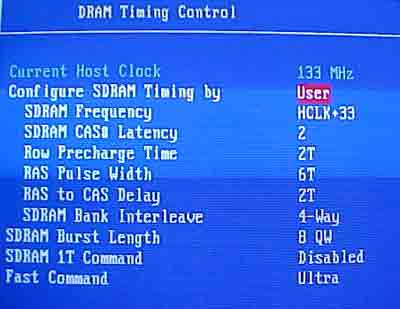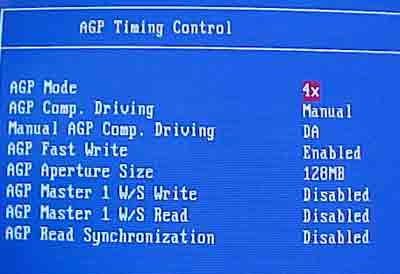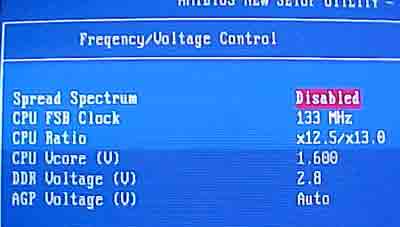MSI uses a modified
version of the Award BIOS that we've all become accustomed to. It's a bit
cleaner, looks better and more organized then the original.
While not difficult
to use, it took me a bit of time to get use to the new layout. We still have all
the usual tweaks from CAS Latency, to FSB adjustment to AGP frequency
control.

Looking at the DRAM
timing we have all the usual memory tweaks that are available, CAS Latency,
memory frequency, bank interleaving options and even command rate.

Again like most
other motherboards we've tested, the KT3 Ultra2 has all the usual AGP tweaks as
well. AGP mode, Fast Write options and the
ability to set the AGP driving...
We found by default
that the driving mode was set to "CB" on MSI boards, but on every other KT333
board we've tested it was set to "DA". Changing the driving to "DA" resulted in
about a 100 point gain in 3DMark2001SE. Even though we didn't encounter any
stability problems, we think MSI may have done this to improve stability for the
user. After all, what good is a fast computer if it crashes every 5
minutes?

Ahh, my favorite
part of the BIOS... Here we can adjust the FSB from 100-220 MHz in 1 MHz
increments. If you know the capabilities of your motherboard you can directly
input it on the keyboard instead of scrolling through a bunch of numbers. Since
the test Thoroughbred we use is unlocked, we had full multiplier
control up to 12.5x.
CPU Vcore could be
upped only to 1.7V. DDR voltages go up to 2.8V, and you can also raise the AGP
voltage from 1.5V to 1.8V if you videocard is giving you problems at higher
speeds.
